The Imperial Palace (also called the Forbidden City) was built in the 1400’s by order of the third Ming emperor, Yongle. The largest imperial palace in the world, it has 980 buildings and over 8700 rooms, and it is surrounded by a 32-foot wall and a 170-foot wide moat. It served as the imperial palace for 24 emperors during the Ming and Qing Dynasties. Access was forbidden to “ordinary” people without the specific permission of the emperor, hence its name. It is also said that the lack of privacy and strict routines and rituals observed by the emperor, empress and concubines made the palace a “golden prison”. The Forbidden City was declared a UNESCO World Heritage Site in 1987.
We entered through the Gate of Heavenly Peace, and then the Meridian Gate, and then the Gate of Supreme Harmony with guardian lion figures at its entrance. Without a map, a lack of signage, and an inability to take notes due to the extreme press of people, I have only been able to identify some of the buildings – all in retrospect. These photos, however, are of different buildings in the imperial complex and nonetheless reflect the grandeur and enormity of the palace.
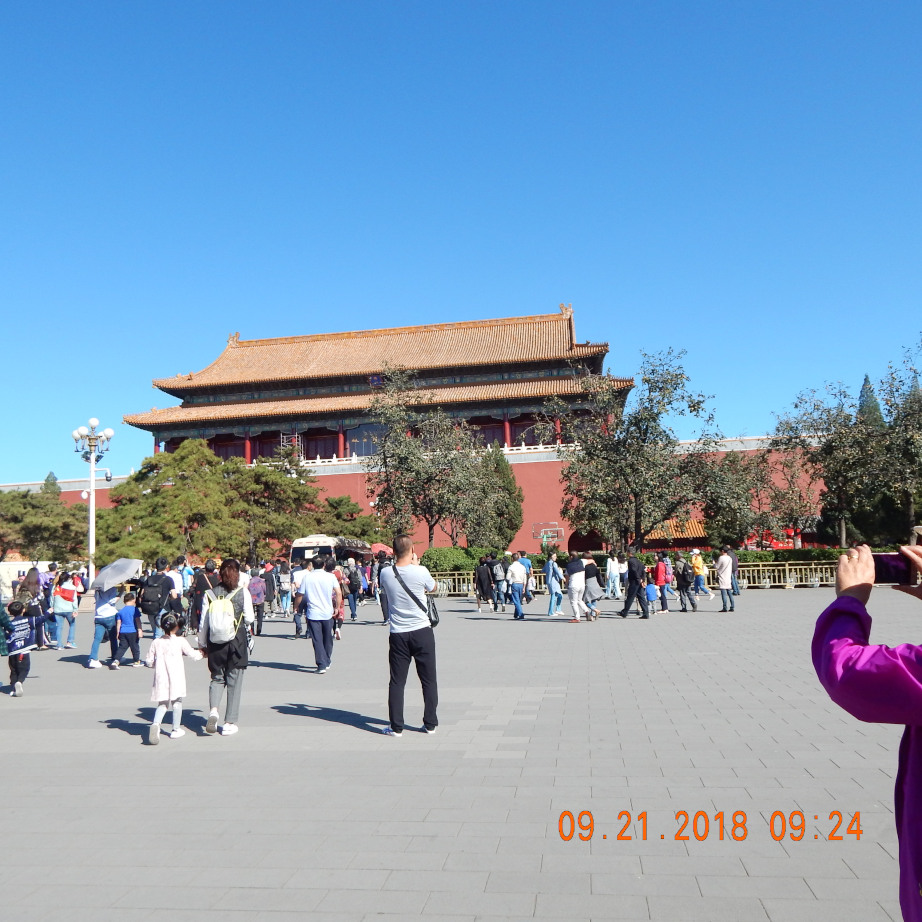
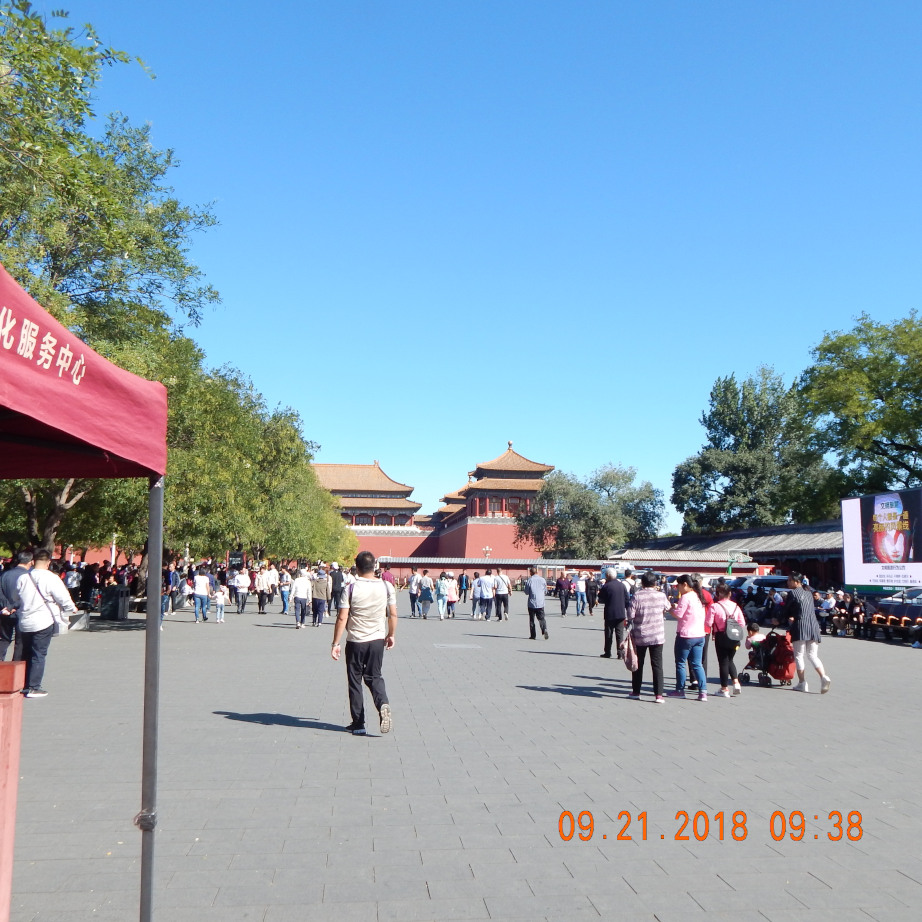
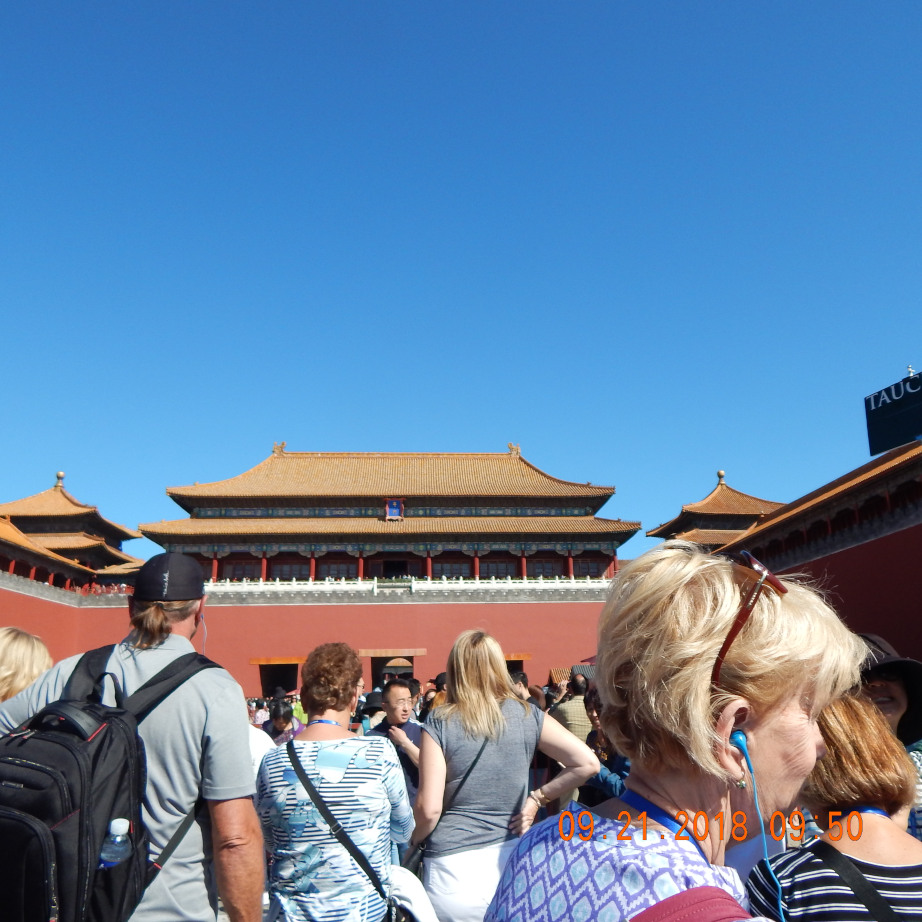
Meridian Gate
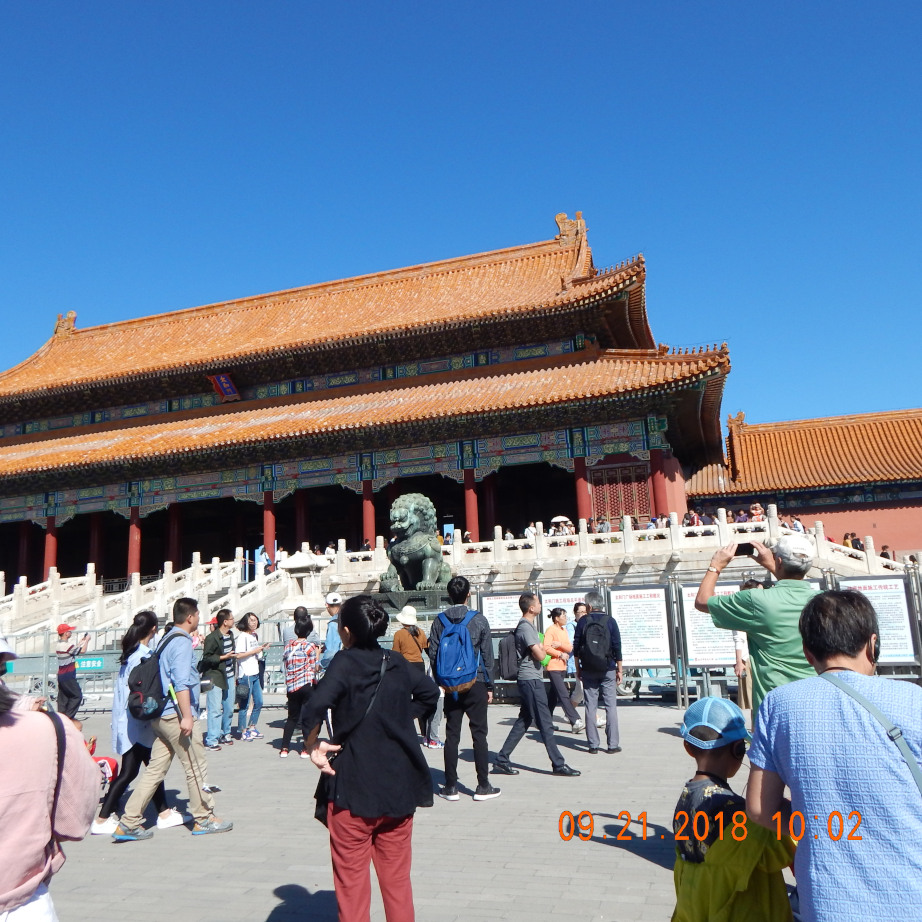
Gate of Supreme Harmony

Court of the Imperial Palace
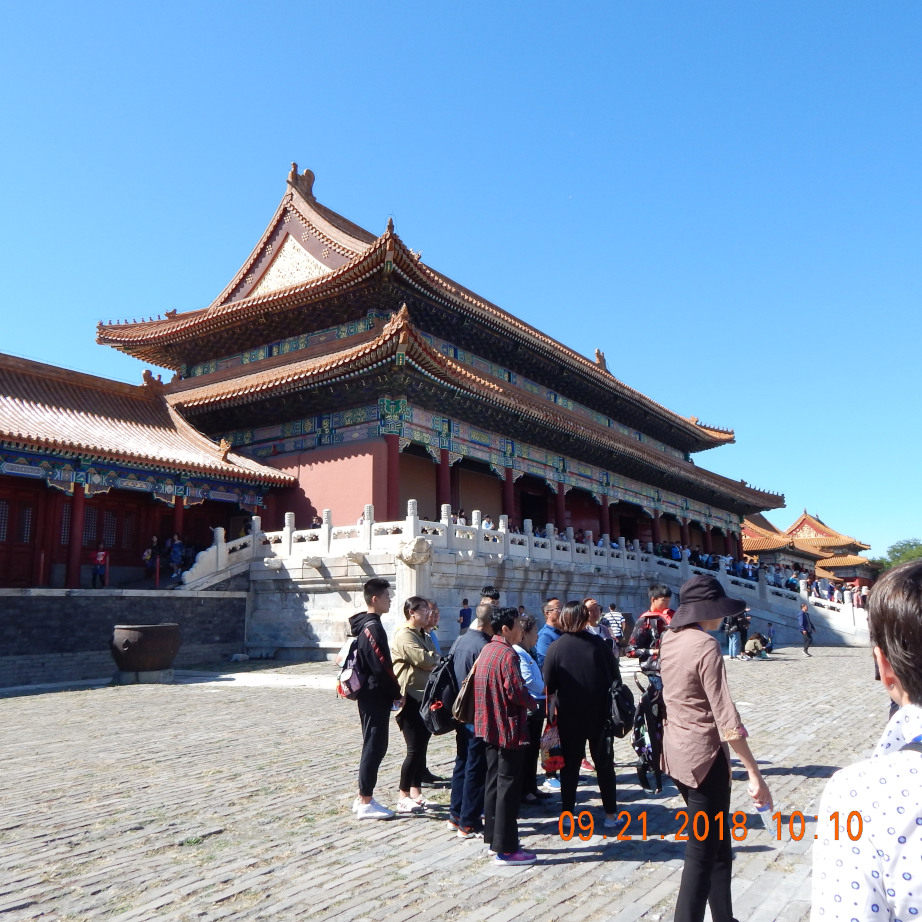
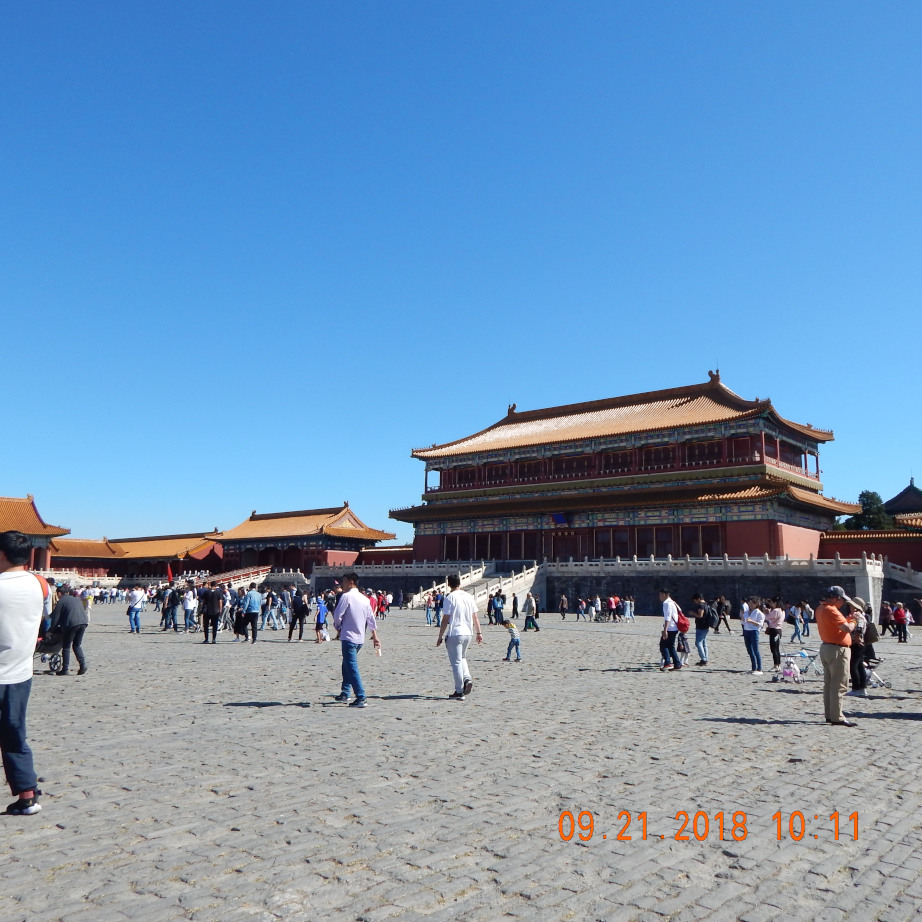
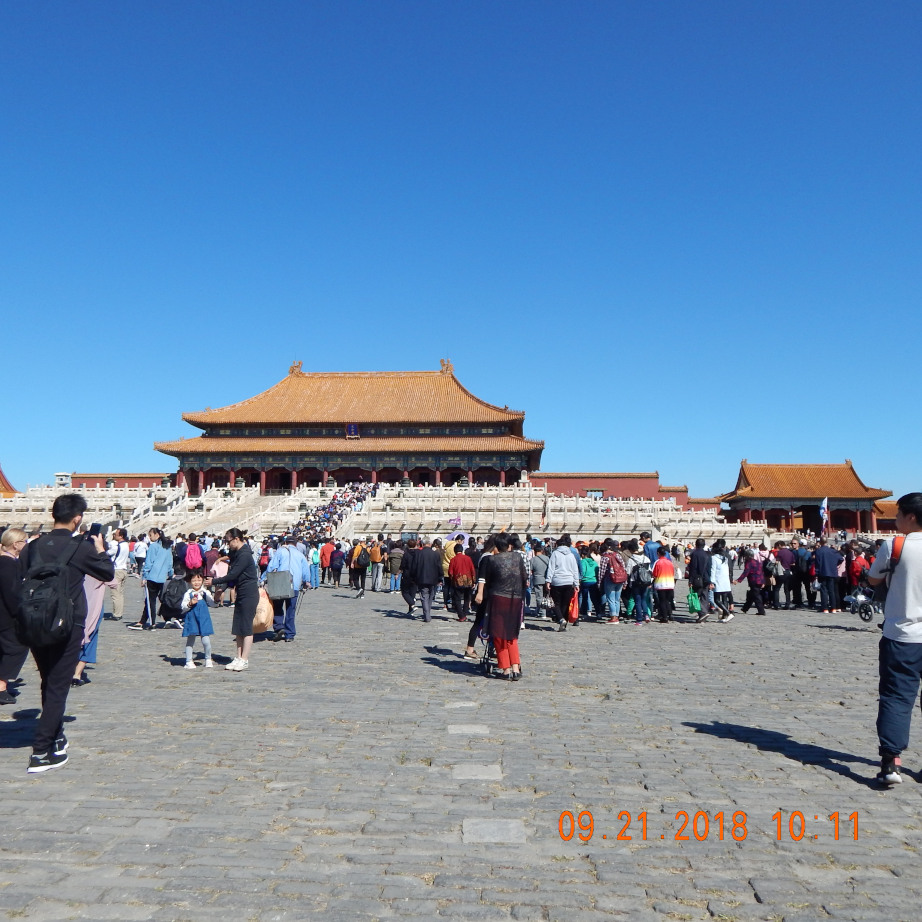
Hall of Supreme Harmony

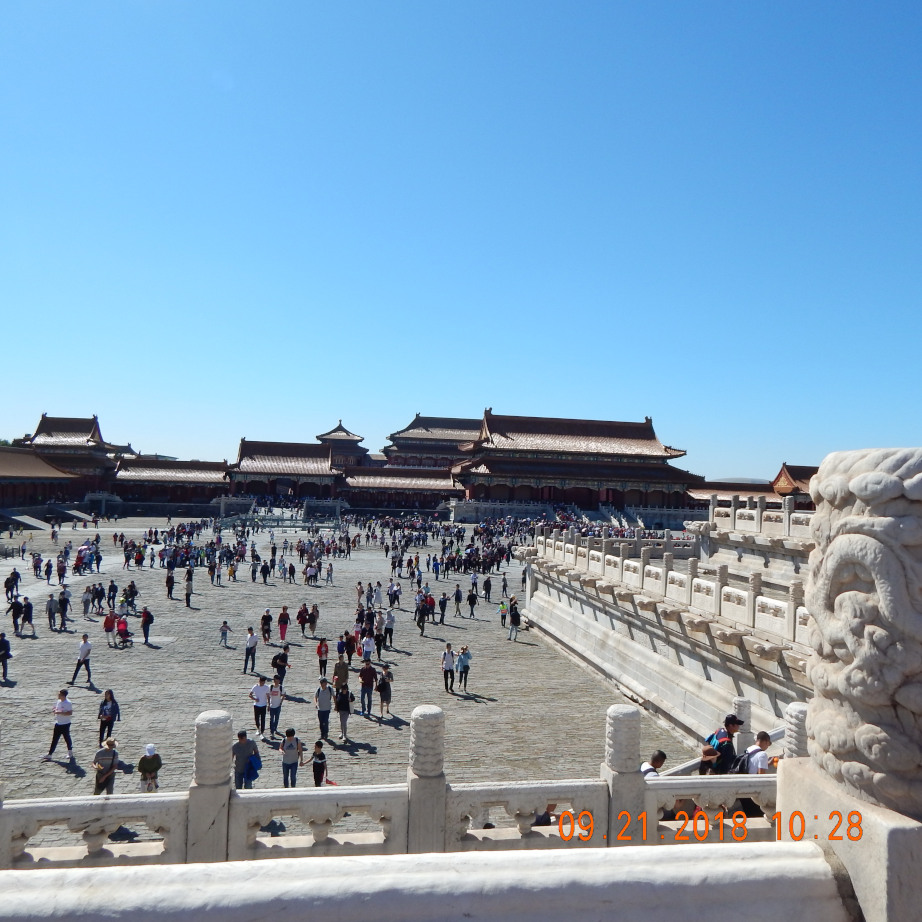
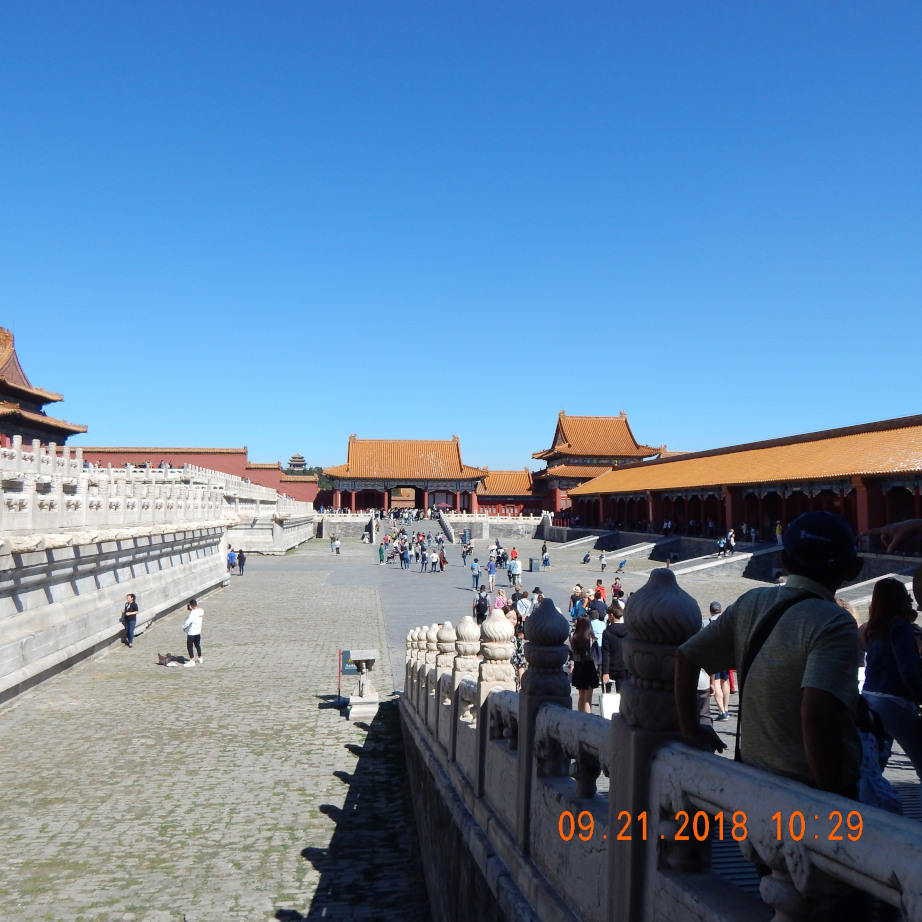
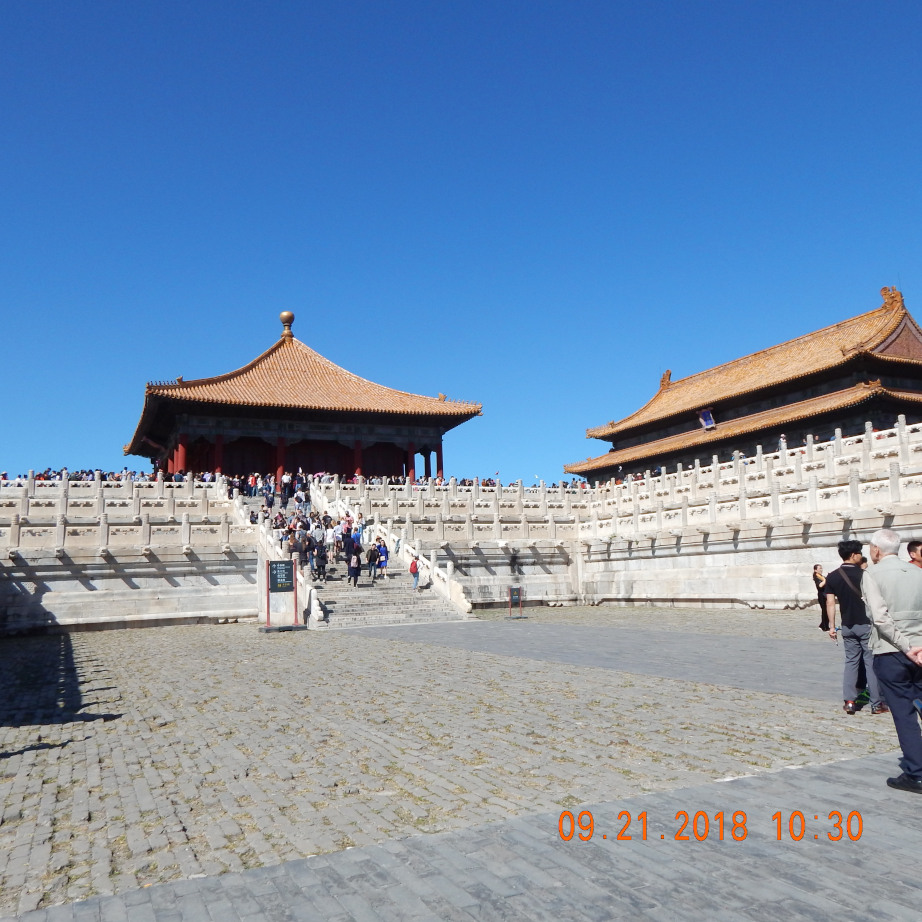
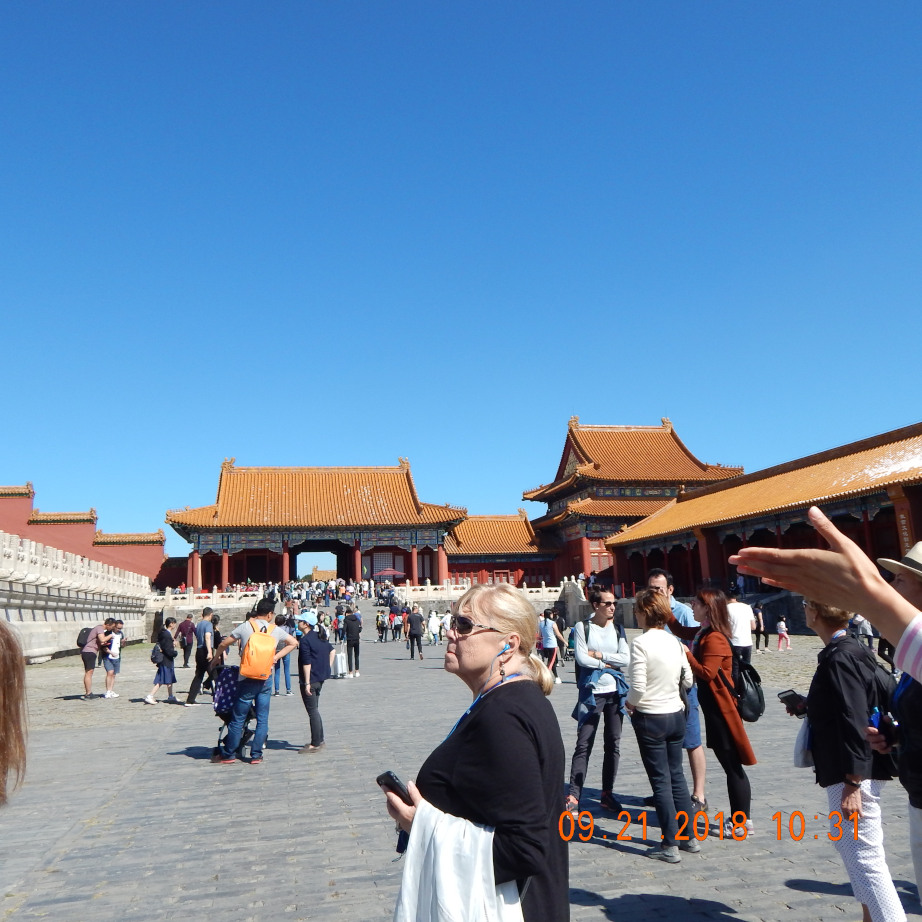
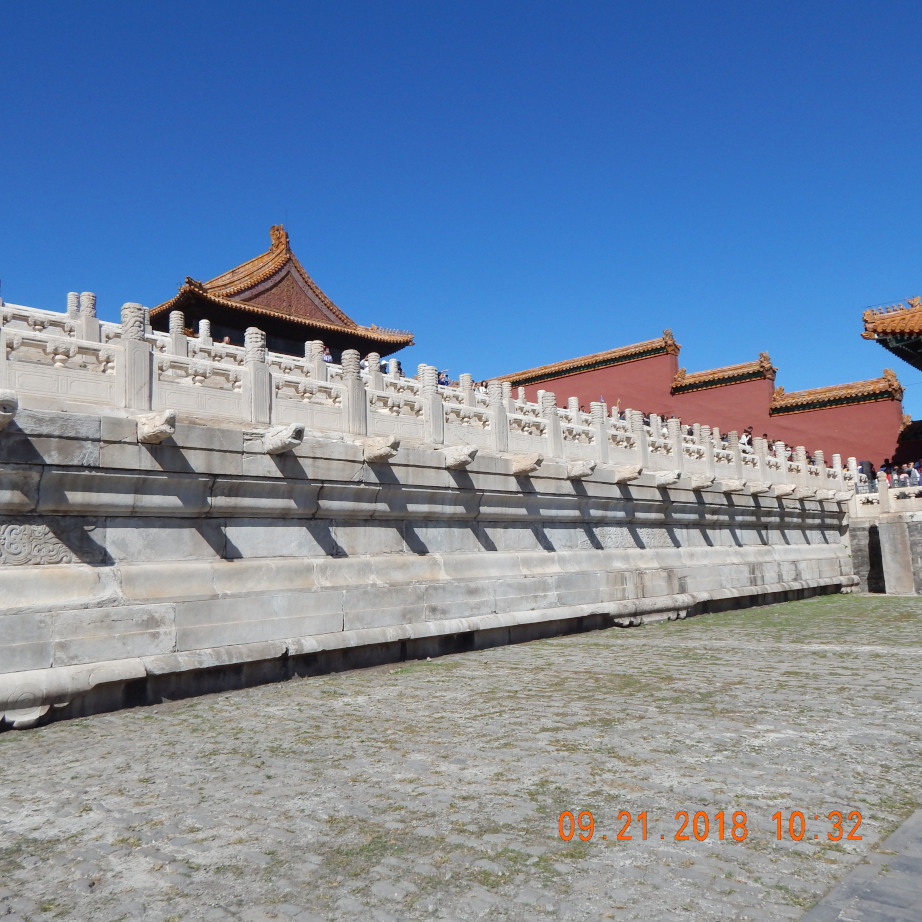
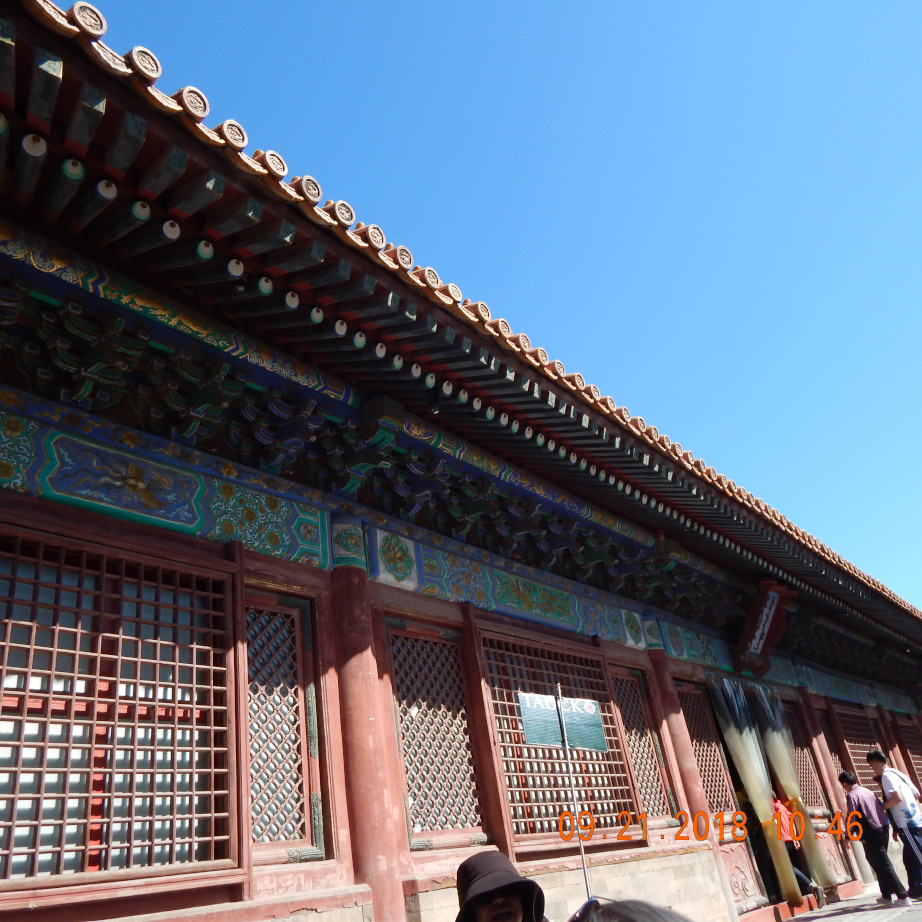

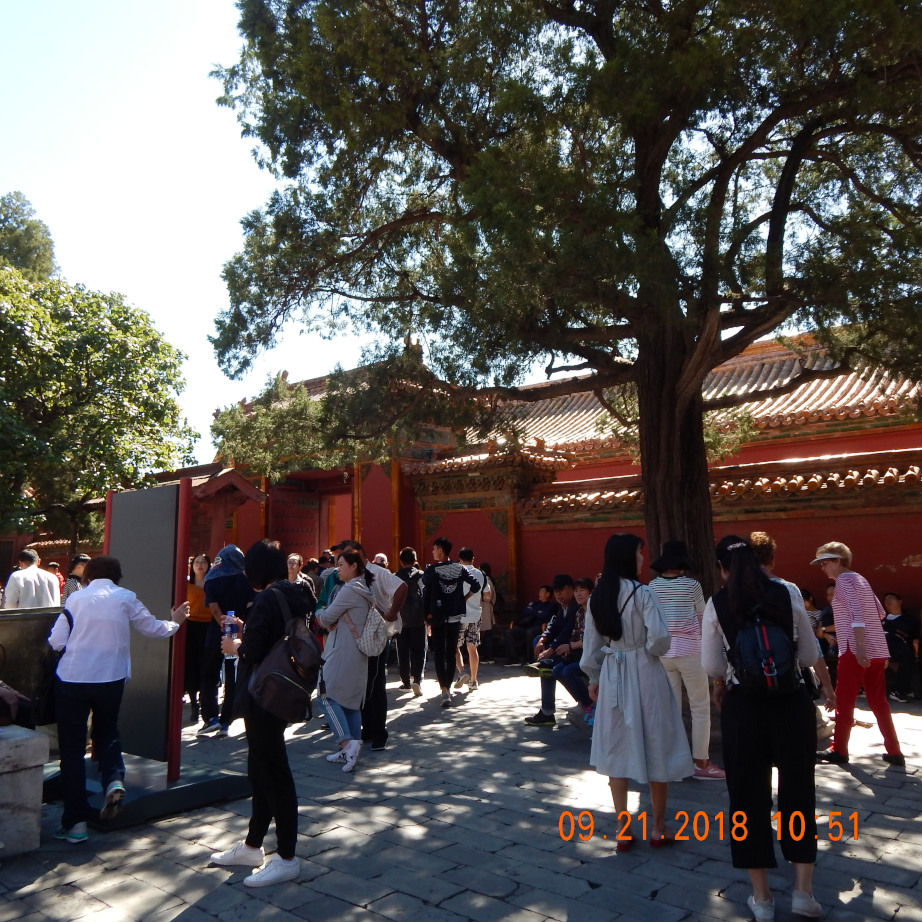


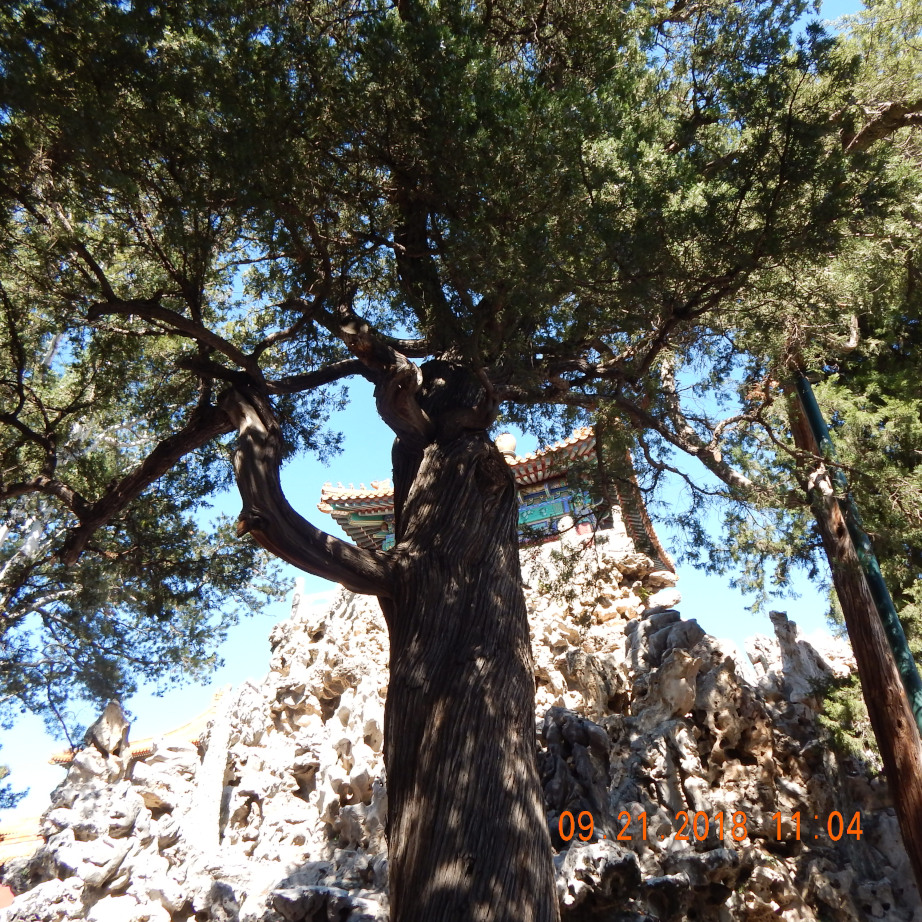

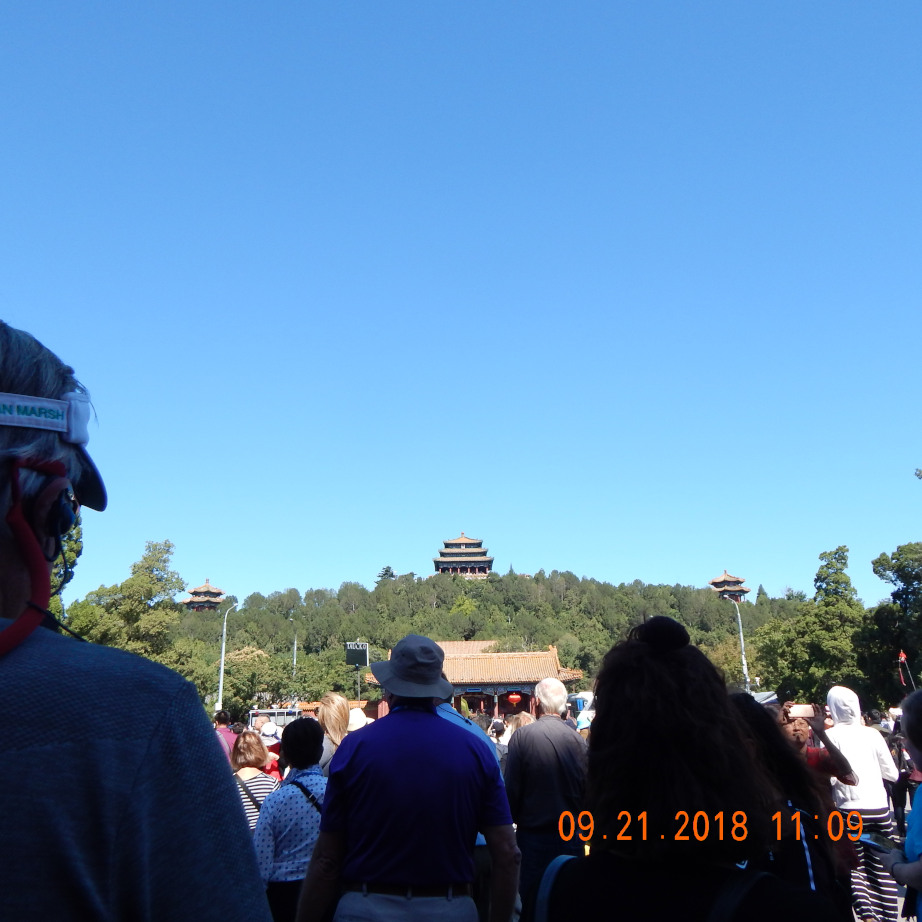
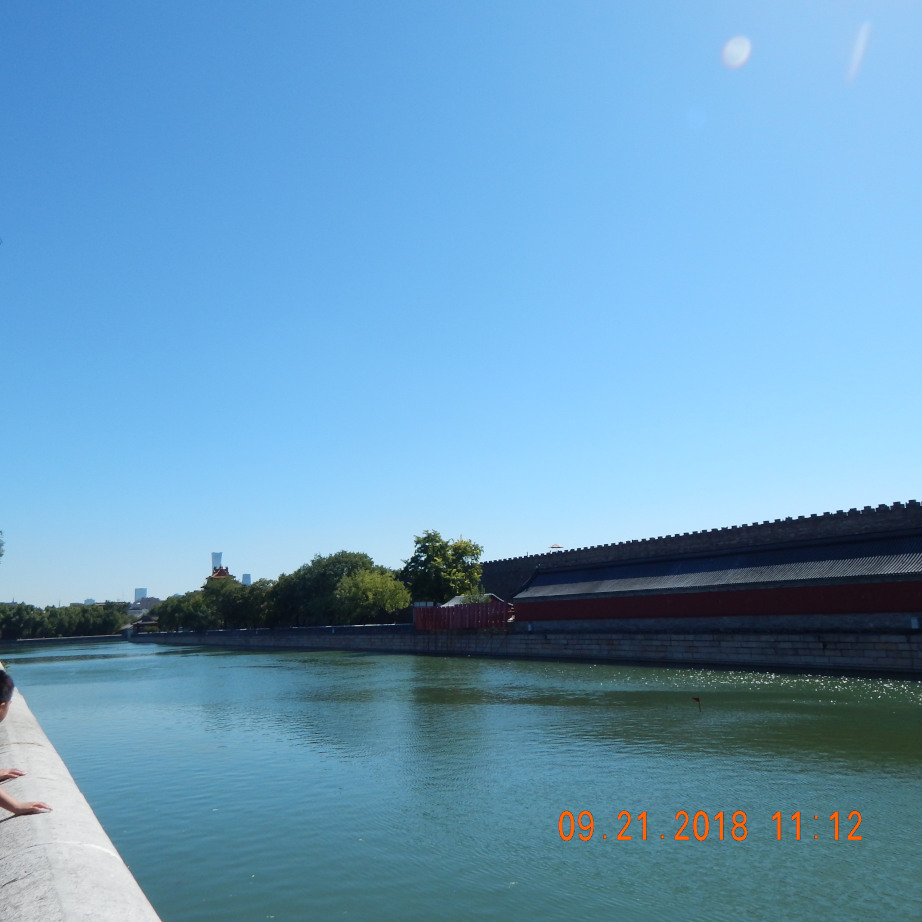
Palace Moat
